Al-lama Iqbal

Al-lama Iqbal, great poet-philosopher and active political leader, was born at Sialkot, Punjab, in 1877. He descended from a family of Kashmiri Brahmins, who had embraced Islam about 300 years earlier.
Iqbal received his early education in the traditional maktab. Later he joined the Sialkot Mission School, from where he passed his matriculation examination. In 1897, he obtained his Bachelor of Arts Degree from Government College, Lahore. Two years later, he secured his Masters Degree and was appointed in the Oriental College, Lahore, as a lecturer of history, philosophy and English. He later proceeded to Europe for higher studies. Having obtained a degree at Cambridge, he secured his doctorate at Munich and finally qualified as a barrister.
He returned to India in 1908. Besides teaching and practicing law, Iqbal continued to write poetry. He resigned from government service in 1911 and took up the task of propagating individual thinking among the Muslims through his poetry.
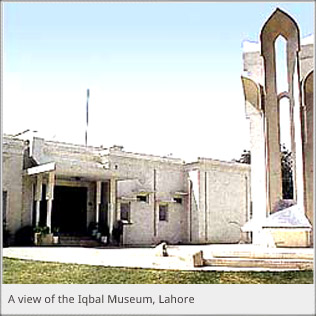 By 1928, his reputation as a great Muslim philosopher was solidly established and he was invited to deliver lectures at Hyderabad, Aligarh and Madras. These series of lectures were later published as a book “The Reconstruction of Religious Thought in Islam”. In 1930, Iqbal was invited to preside over the open session of the Muslim League at Allahabad. In his historic Allahabad Address, Iqbal visualized an independent and sovereign state for the Muslims of North-Western India. In 1932, Iqbal came to England as a Muslim delegate to the Third Round Table Conference.
By 1928, his reputation as a great Muslim philosopher was solidly established and he was invited to deliver lectures at Hyderabad, Aligarh and Madras. These series of lectures were later published as a book “The Reconstruction of Religious Thought in Islam”. In 1930, Iqbal was invited to preside over the open session of the Muslim League at Allahabad. In his historic Allahabad Address, Iqbal visualized an independent and sovereign state for the Muslims of North-Western India. In 1932, Iqbal came to England as a Muslim delegate to the Third Round Table Conference.
In later years, when the Quaid had left India and was residing in England, Al-lama Iqbal wrote to him conveying to him his personal views on political problems and state of affairs of the Indian Muslims, and also persuading him to come back. These letters are dated from June 1936 to November 1937. This series of correspondence is now a part of important historic documents concerning Pakistan’s struggle for freedom.
On April 21, 1938, the great Muslim poet-philosopher and champion of the Muslim cause, passed away. He lies buried next to the Badshahi Mosque in Lahore
Historical Background of Pakistan and its People
Muhammad Ali Jinnah

Muhammad Ali Jinnah was born in Karachi on December 25, 1876. His father Jinnah Poonja was an Ismaili Khoja of Kathiawar, a prosperous business community. Muhammad Ali received his early education at the Sindh Madrasa and later at the Mission School, Karachi. He went to England for further studies in 1892 at the age of 16. In 1896, Jinnah qualified for the Bar and was called to the Bar in 1897.
Muhammad Ali Jinnah started his political career in 1906 when he attended the Calcutta session of the All India National Congress in the capacity of Private Secretary to the President of the Congress. In 1910, he was elected to the Imperial Legislative Council. He sponsored the Waqf Validating Bill, which brought him in touch with other Muslim leaders. In March 1913, Jinnah joined the All India Muslim League.
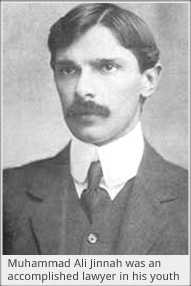 As
a member of the Muslim League, Jinnah began to work for Hindu-Muslim
unity. In 1917, the annual sessions of both the Congress and the League
were held at Lucknow. The League session was presided over by Muhammad
Ali Jinnah. It marked the culmination of his efforts towards
Hindu-Muslim unity. Here, both the League and the Congress adopted a
scheme of reforms known as the Lucknow Pact.
As
a member of the Muslim League, Jinnah began to work for Hindu-Muslim
unity. In 1917, the annual sessions of both the Congress and the League
were held at Lucknow. The League session was presided over by Muhammad
Ali Jinnah. It marked the culmination of his efforts towards
Hindu-Muslim unity. Here, both the League and the Congress adopted a
scheme of reforms known as the Lucknow Pact.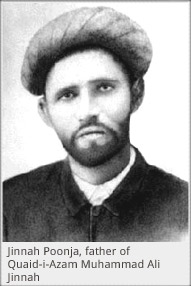 On
April 19, 1918, Jinnah married Rutanbai. Their daughter, Dina was born a
year later. In 1919, Jinnah resigned from his membership of the
Imperial Legislative Council as protest against the “Rowlatt Act”.
On
April 19, 1918, Jinnah married Rutanbai. Their daughter, Dina was born a
year later. In 1919, Jinnah resigned from his membership of the
Imperial Legislative Council as protest against the “Rowlatt Act”.Until the publication of Nehru Report, Jinnah continued his efforts for Hindu-Muslim unity. The Nehru Report, published in 1928, was severely criticized by all sections of the Muslim community. In December 1928, the National Convention was called to consider the Report. Jinnah proposed some amendments, but they were all rejected. He finally parted ways with the Congress.
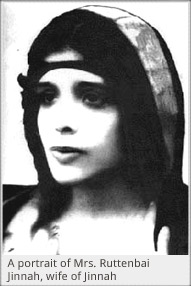 In
1929, Jinnah presented his famous Fourteen Points in response to the
Nehru Report. When he returned from England, he reorganized the Muslim
League. In 1934, he was elected as its permanent president.
In
1929, Jinnah presented his famous Fourteen Points in response to the
Nehru Report. When he returned from England, he reorganized the Muslim
League. In 1934, he was elected as its permanent president.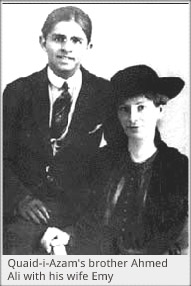 The
Provincial Assembly elections of 1937 swept the Congress to power in
eight provinces. After almost two years of oppressive rule, Muslims
under the leadership of Jinnah, celebrated the Day of Deliverance at the
end of Congress rule.
The
Provincial Assembly elections of 1937 swept the Congress to power in
eight provinces. After almost two years of oppressive rule, Muslims
under the leadership of Jinnah, celebrated the Day of Deliverance at the
end of Congress rule.The Muslim League held its annual session at Lahore in March 1940. This was presided over by Quaid-i-Azam. The demand for Pakistan was formally put forward here. This goal was realized on August 14, 1947. Quaid-i-Azam Muhammad Ali Jinnah was appointed as its first Governor General.
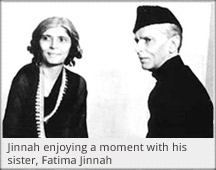 The
establishment of Pakistan brought even greater responsibilities for
Jinnah. The refugee problem, the withholding of Pakistani assets by
India, and the Kashmir problem were a real test for the Quaid. However,
his indomitable will prevailed. He worked out a sound economic policy,
established an independent currency and the State Bank for Pakistan. He
chose Karachi as the federal capital.
The
establishment of Pakistan brought even greater responsibilities for
Jinnah. The refugee problem, the withholding of Pakistani assets by
India, and the Kashmir problem were a real test for the Quaid. However,
his indomitable will prevailed. He worked out a sound economic policy,
established an independent currency and the State Bank for Pakistan. He
chose Karachi as the federal capital.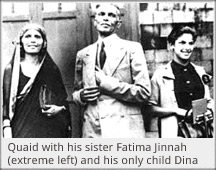 However,
he did not live long to witness the progress of the state that he had
founded. On September 11, 1948, he died after a protracted illness at
Karachi. He was buried in Karachi that witnessed the entire nation
mourning over an irreparable loss
However,
he did not live long to witness the progress of the state that he had
founded. On September 11, 1948, he died after a protracted illness at
Karachi. He was buried in Karachi that witnessed the entire nation
mourning over an irreparable lossFatima Jinnah

Miss Fatima Jinnah initially lived with her brother for about eight years till 1918, when he got married to Rutanbai. Upon Rutanbai’s death in February 1929, Miss Jinnah wound up her clinic, moved into Jinnah’s bungalow, and took charge of his house; thus beginning the life-long companionship that lasted till Jinnah’s death on September 11, 1948.
 In
all, Miss Jinnah lived with her brother for about 28 years, including
the last 19 tiring years of his life. The Quaid would discuss various
problems with her, mostly at the breakfast and dinner table. Paying
tribute to her sister, the Quaid once said, “My sister was like a bright
ray of light and hope whenever I came back home and met her. Anxieties
would have been much greater and my health much worse, but for the
restraint imposed by her”.
In
all, Miss Jinnah lived with her brother for about 28 years, including
the last 19 tiring years of his life. The Quaid would discuss various
problems with her, mostly at the breakfast and dinner table. Paying
tribute to her sister, the Quaid once said, “My sister was like a bright
ray of light and hope whenever I came back home and met her. Anxieties
would have been much greater and my health much worse, but for the
restraint imposed by her”.Miss Jinnah not only lived with her brother but also accompanied him on his numerous tours. In 1932, she joined him in London when he remained there after the Second Round Table Conference.
When the All India Muslim League was being organized, Miss Fatima Jinnah was taken on as a member of the Working Committee of the Bombay Provincial Muslim League, and worked in that capacity until 1947.
In March 1940, she attended the Lahore session of the Muslim League. Fatima was convinced that the Hindus intended to subjugate and dominate the Muslims completely. It was primarily due to her initiative that the All India Muslim Women Students Federation was organized in February 1941 at Delhi.
During the transfer of power in 1947, she was an inspiration to Muslim women. She formed the Women’s Relief Committee, which later formed the nucleus for the All Pakistan Women’s Association. She also played a significant role in the settlement of refugees in the new state of Pakistan.
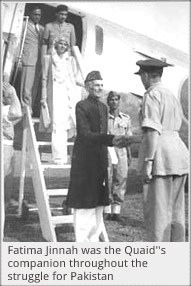 Despite
her old age, she continued to help social and educational associations.
During the Quaid’s illness, she remained passionately attached to him.
After his death, she often issued important statements on important
occasions, as a reminder to the nation of the ideals on which Pakistan
had been established.
Despite
her old age, she continued to help social and educational associations.
During the Quaid’s illness, she remained passionately attached to him.
After his death, she often issued important statements on important
occasions, as a reminder to the nation of the ideals on which Pakistan
had been established.In 1965, Miss Fatima Jinnah ran for President as a candidate of the Combined Opposition Party. Even a conservative party like the Jamaat-i-Islami accepted her as a woman presidential candidate. Miss Jinnah’s greatest advantage was that she was sister of the Founder of Pakistan and had been detached from the political conflicts that had plagued Pakistan after the Founder’s death. The sight of this dynamic lady moving in the streets of big cities, and even in the rural areas of a Muslim country, was both moving and unique. She proclaimed her opponent presidential candidate, Ayub Khan, a dictator. Miss Jinnah’s line of attack was that by coming to terms with India on the Indus Water dispute, Ayub had surrendered control of the rivers over to India. Her campaign generated such tremendous public enthusiasm that most of the press agreed that if the contest were by direct election, she would have won against Ayub.
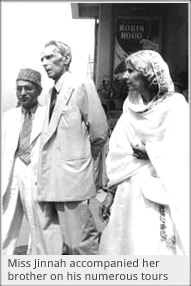 It
seems that the thought of doing a biography of her illustrious brother
came to Miss Jinnah about the time when Hector Bolitho’s “Jinnah Creator
of Pakistan” was first published in 1954. It was felt that Bolitho had
failed to bring out the political aspects of Jinnah’s life in his book.
Miss Jinnah started looking for a Pakistani author to do a biography of
the Quaid. G. Allana was her choice. G. Allana assisted Miss Jinnah on
the assignment but they parted company due to reasons undisclosed. Later
both carried on their independent works on Jinnah. Her book “My
Brother” was published by the Quaid-i-Azam Academy in 1987.
It
seems that the thought of doing a biography of her illustrious brother
came to Miss Jinnah about the time when Hector Bolitho’s “Jinnah Creator
of Pakistan” was first published in 1954. It was felt that Bolitho had
failed to bring out the political aspects of Jinnah’s life in his book.
Miss Jinnah started looking for a Pakistani author to do a biography of
the Quaid. G. Allana was her choice. G. Allana assisted Miss Jinnah on
the assignment but they parted company due to reasons undisclosed. Later
both carried on their independent works on Jinnah. Her book “My
Brother” was published by the Quaid-i-Azam Academy in 1987.The people of Pakistan hold Miss Fatima in high esteem. Due to her selfless work for Pakistan, the nation conferred upon her the title of Madar-i-Millat, or “Mother of the Nation”. She died in Karachi on July 8, 1967. Some historians indicate that the date of her death was actually July 2, 1967.
Following are excerpts from some of her statements.
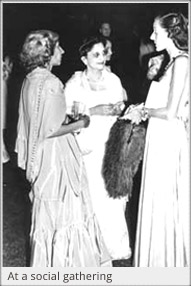 Madar-i-Millat’s
Message to the Nation on Eid-ul-Azha, 1967: “The immediate task before
you is to face the problem and bring the country back on the right path
with the bugles of Quaid-i-Azam’s message. March forward under the
banner of star and the crescent with unity in your ranks, faith in your
mission and discipline. Fulfill your mission and a great sublime future
awaits your enthusiasm and action. Remember: ‘cowards die many times
before death; the valiant never taste death but once.’ This is the only
course of action which suits any self-respecting people and certainly
the Muslim Nation.”
Madar-i-Millat’s
Message to the Nation on Eid-ul-Azha, 1967: “The immediate task before
you is to face the problem and bring the country back on the right path
with the bugles of Quaid-i-Azam’s message. March forward under the
banner of star and the crescent with unity in your ranks, faith in your
mission and discipline. Fulfill your mission and a great sublime future
awaits your enthusiasm and action. Remember: ‘cowards die many times
before death; the valiant never taste death but once.’ This is the only
course of action which suits any self-respecting people and certainly
the Muslim Nation.”Madar-i-Millat’s Message to the Nation on Eid-ul-Azha, 1965: “Let us sink all our differences and stand united together under the same banner under which we truly achieved Pakistan and let us demonstrate once again that we can, united, face all dangers in the cause of glory of Pakistan, the glory that the Quaid-i-Azam envisaged for Pakistan.”
Madar-i-Millat’s Message to the Nation on Quaid-i-Azam’s Birthday, 25 December, 1963: “The movement of Pakistan which the Quaid-i-Azam launched was ethical in inspiration and ideological in content. The story of this movement is a story of the ideals of equality, fraternity and social and economic justice struggling against the forces of domination, exploitation, intolerance and tyranny”.
Liaquat Ali Khan

On his return from England in 1923, Liaquat Ali Khan decided to enter politics with the objective of liberating his homeland from the foreign yoke. Right from the very beginning, he was determined to eradicate the injustices and ill treatment meted out to the Indian Muslims by the British. In his early life, Liaquat Ali, like most of the Muslim leaders of his time, believed in Indian Nationalism. But his views gradually changed. The Congress leaders invited him to join their party, but he refused and joined the Muslim League in 1923. Under the leadership of Quaid-i-Azam, the Muslim League held its annual session in May 1924 in Lahore. The aim of this session was to revive the League. Liaquat Ali Khan attended this conference along many other young Muslims.
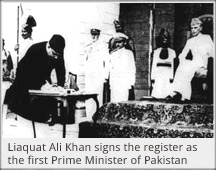 Liaquat
Ali started his parliamentary career from the U. P. Legislative
Assembly in 1926 as an independent candidate. Later he formed his own
party, The Democratic Party, within the Legislative Assembly and was
elected as its leader. He remained the member of the U. P. Legislative
Council till 1940 when he was elected to the Central Legislative
Assembly.
Liaquat
Ali started his parliamentary career from the U. P. Legislative
Assembly in 1926 as an independent candidate. Later he formed his own
party, The Democratic Party, within the Legislative Assembly and was
elected as its leader. He remained the member of the U. P. Legislative
Council till 1940 when he was elected to the Central Legislative
Assembly.In his parliamentary career, Liaquat Ali Khan established his reputation as an eloquent, principled and honest spokesman who never compromised on his principles even in the face of severe odds. He used his influence and good offices for the liquidation of communal tension and bitterness. He took active part in legislative affairs. He was one of the members of the Muslim League delegation that attended the National Convention held at Calcutta to discuss the Nehru Report in December 1928.
 Liaquat
Ali’s second marriage took place in 1933. His wife Begum Ra’ana was a
distinguished economist and an educationist who stood by her husband
during the ups and downs of his political career. She proved to be a
valuable asset to his political career as well as his private life.
Quaid-i-Azam in those days was in England in self-exile. The newly wed
couple had a number of meetings with the Quaid and convinced him to come
back to India to take up the leadership of the Muslims of the region.
Liaquat
Ali’s second marriage took place in 1933. His wife Begum Ra’ana was a
distinguished economist and an educationist who stood by her husband
during the ups and downs of his political career. She proved to be a
valuable asset to his political career as well as his private life.
Quaid-i-Azam in those days was in England in self-exile. The newly wed
couple had a number of meetings with the Quaid and convinced him to come
back to India to take up the leadership of the Muslims of the region.When Quaid-i-Azam returned to India, he started reorganizing the Muslim League. Liaquat was elected as the Honorary Sectary of the party on April 26, 1936. He held the office till the establishment of Pakistan in 1947. In 1940, he was made the deputy leader of the Muslim League Parliamentary party. Quaid-i-Azam was not able to take active part in the proceedings of the Assembly on account of his heavy political work; thus the whole burden of protecting Muslim interests in the Assembly fell on Liaquat Ali’s shoulders. Liaquat Ali was also the member of Muslim Masses Civil Defense Committee, which was formed to keep the Muslims safe from Congress activities and to strengthen the League’s mission.
Liaquat Ali Khan won the Central Legislature election in 1945-46 from the Meerut Constituency in U. P. He was also elected Chairman of the League’s Central Parliamentary Board. He assisted Quaid-i-Azam in his negotiations with the members of the Cabinet Mission and the leaders of the Congress during the final phases of the Freedom Movement. When the Government asked the Muslim League to send their nominees for representation in the interim government, Liaquat was asked to lead the League group in the cabinet. He was given the portfolio of finance, which he handled brilliantly. He influenced the working of all the departments of the Government and presented a poor man’s budget. His policies as Finance Minister helped in convincing the Congress to accept the Muslim demand of a separate homeland.
After independence, Quaid-i-Azam and Muslim League appointed Liaquat to be the head of the Pakistan Government. Being the first Prime Minister of the country, He had to deal with a number of difficulties facing Pakistan in its early days. Liaquat Ali Khan helped Quaid-i-Azam in solving the riot and refugee problem and setting up an effective administrative system for the country. After the death of Quaid-i-Azam, Liaquat tried to fill the vacuum created by the departure of the Father of the Nation. Under his premiership, Pakistan took its first steps in the field of constitution making, as well as foreign policy. He presented the Objectives Resolution in the Legislative Assembly. The house passed this on March 12, 1949. Under his leadership a team also drafted the first report of the Basic Principle Committee. His efforts in signing the Liaquat-Nehru pact pertaining to the minority issue in 1950 reduced tensions between India and Pakistan. In May 1951, he visited the United States and set the course of Pakistan’s foreign policy towards closer ties with the West.
On October 16, 1951, Liaquat Ali Khan was assassinated. He had been scheduled to make an important announcement in a public meeting at Municipal Park, Rawalpindi. The security forces immediately shot the assassin, who was later identified as Saad Akbar. Killing the assassin erased all clues to the identity of the real culprit behind the murder. Liaquat Ali Khan was officially given the title of Shaheed-i-Millat, but the question of who was behind his murder is yet to be answered.

The Muslims faced a gamut of problems immediately after independence. However, keeping true to their traditions, they overcame them after a while. Quaid-i-Azam Muhammad Ali Jinnah was appointed the first Governor General of Pakistan and Liaquat Ali Khan became its first Prime Minister. Pakistan became a dominion within the British Commonwealth of Nations.
The boundaries of Pakistan emerged on the map of the world in 1947. This was accomplished on the basis of the Two-Nation Theory. This theory held that there were two nations, Hindus and Muslims living in the territory of the Sub-continent. Sir Syed Ahmad Khan was the first exponent of the Two-Nation Theory in the modern era. He believed that India was a continent and not a country, and that among the vast population of different races and different creeds, Hindus and Muslims were the two major nations on the basis of nationality, religion, way-of-life, customs, traditions, culture and historical conditions.
The politicization of the Muslim community came about as a consequence of three developments:
- Various efforts towards Islamic reform and revival during the late 19th and early 20th centuries.
- The impact of Hindu-based nationalism.
- The democratization of the government of British India.
In the same year, the founding of the All India Muslim League, a separate political organization for Muslims, elucidated the fact that the Muslims of India had lost trust in the Hindu-dominated Indian National Congress. Besides being a Hindu-dominated body, the Congress leaders in order to win grass-root support for their political movements, used Hindu religious symbols and slogans, thereby arousing Muslim suspicions regarding the secular character of the Congress.
Events like the Urdu-Hindi controversy (1867), the partition of Bengal (1905), and Hindu revivalism, set the two nations, the Hindus and the Muslims, further apart. Re-annulment of the partition of Bengal in 1911 by the British government brought the Congress and the Muslim League on one platform. Starting with the constitutional cooperation in the Lucknow Pact (1916), they launched the Non-Cooperation and Khilafat Movements to press upon the British government the demand for constitutional reforms in India in the post-World War I era.
But after the collapse of the Khilafat Movement, Hindu-Muslim antagonism was revived once again. The Muslim League rejected the proposals forwarded by the Nehru Report and they chose a separate path for themselves. The idea of a separate homeland for the Muslims of Northern India as proposed by Allama Iqbal in his famous Allahabad Address showed that the creation of two separate states for the Muslims and Hindus was the only solution. The idea was reiterated during the Sindh provincial meeting of the League, and finally adopted as the official League position in the Lahore Declaration of March 23, 1940.
Thus these historical, cultural, religious and social differences between the two nations accelerated the pace of political developments, finally leading to the division of British India into two separate, independent states, Pakistan and India, on August 14 & 15, 1947, respectively
Kashmir War 1947 - 49
Introduction
By
November 1947 Auchinleck, Supreme Commander based in New Delhi, being
convinced that Indian Cabinet was seeking to destroy and undo Pakistan
by economic and military means, was forced to resign. As the build-up of
Indian forces in Jammu and Kashmir continued, Pakistan Army units were
being hurriedly organized and equipped without any base for manufacture
of ammunition, signal stores, equipment or vehicles. Simultaneously,
Pakistan National Guards were raised from ex-servicemen and other
volunteers along border areas to provide a second line of defence. By
February 1948 Indian build up in Jammu and Kashmir reached five brigades
plus, under two full-fledged division Headquarters. Our 101 Brigade,
commanded by Brigadier Akbar Khan was rushed into the critical front to
forestall and halt the Indian offensive along Uri-Muzaffarabad axis. In
April 1948, Commander-in-Chief Pakistan Army appreciating the threats in
the north along Muzaffarabad-Kohala axis, and in the south along
Bhimber-Mirpur-Poonch axis further reinforced the front with elements of
7 Division to halt the Indian offensive at Chakothi. Reinforcements
were rushed overnight to Tithwal sector to defend Muzaffarabad front
9(F) Division was also moved to reinforce 7 Division in Tithwal, Uri and
Bagh sectors. 7 Division was thereafter moved to the southern front. In
May Pakistan informed the United Nations of these moves. By June,
Pakistan had five brigades in Jammu and Kashmir together with Azad
Kashmir forces and elements of the para-military Frontier Corps, holding
twelve Indian brigades (with 4 to 5 battalions each) supported by
armour, artillery and Indian Air Force. Indian summer offensive was
decisively beaten and halted. Some months later, two brigades of 8
Division from Quetta further reinforced Muzaffarabad-Uri front.
 |
||
On 14 August
1948 , the first anniversary of Pakistan , General Headquarters sent the
following message to the Quaid-e-Azam, “Loyal and grateful greetings
from the Army on the first anniversary of Independence Day. We serve and
shall serve Pakistan with all our hearts and souls. Pakistan and its
Creator, Zindabad.” The Quaid-e-Azam was at that time in Quetta ,
fighting his own battle for survival against a deadly affliction. In
December, Pakistan Army planned to go on the offensive, ‘Operation
Venus', with 7 Division to cut off the main supply route at Beri Pattan
Bridge area, and isolate Indian forces in Nowshera-Jhangar-Poonch
sector. On 14 December, in a pre-attack artillery bombardment the Beri
Pattan bridge area containing ammunition, rations, petrol and supplies
in a two-mile area was totally destroyed together with Indian divisional
Headquarter, isolating the Indian forces in that sector. The Indian
Army was taken by surprise. At midnight on 30 December, India asked for
ceasefire with effect from 1 January 1949 . Pakistan accepted, as the
fate of Jammu and Kashmir had been taken over by the United Nations. By
early 1949 Pakistan Army had completed its formative stage. It halted
the Indian offensive and prevented it from totally over-running Jammu
and Kashmir , and closing up to Pakistan 's vital border areas, thus
ended the war in Jammu and Kashmir . Pakistan Army continued its
reorganization. An ordnance factory to produce small arms and ammunition
was established at Wah. The threat from India was by no means over. In
spring of 1950 and again between July and October 1951 the Indian Army
concentrated on Pakistan‘s borders and transgressed into Azad Kashmir
and West Pakistan territory forty eight times. The Indian Air Force
violated Pakistan 's air space thirty times thus bringing the two
countries very close to another all out war through India 's coercive
diplomacy and interventionist strategy.
1965 War
The Indian forces intruded into Pakistani area in the Rann of Kutch in April 1965. In a sharp and short conflict, the Indian forces were ejected. Both the armies had fully mobilized, with eyeball to eyeball contact. Pakistan proposed cease-fire, India accepted. An agreement was signed: the forces disengaged. The Award by the Arbitration Tribunal vindicated Pakistan 's Position.
Past midnight on 5/6 September, without a formal declaration of war, Indian Army crossed the international border and attacked Lahore and Kasur fronts. Pakistan Army and Pakistan Air Force halted the attack in its tracks, inflicting heavy casualties on the aggressor. On 7 September a single Pakistan Air Force Pilot, Squadron Leader M.M. Alam, Sitara-i-Juraat, in his F-86 Sabre shot down five Indian Air Force attacking Hunter aircraft in a single sortie, an unbeaten world record “On night 6/7 September three teams of our Special Services Groups were para-dropped on Indian Air Force bases at Pathankot, Adampur and Halwara to neutralize them.
To relieve pressure on Lahore front, on night 7/8 September, after crossing two major water obstacles in a bold thrust, Pakistani armoured and mechanized formations supported by artillery and Pakistan Air Force overran area Khem Karn, 6 to 8 miles inside Indian territory. Vital Indian positions at Sulemanki and across Rajasthan and Sindh were also captured in bold, swift attacks.
 |
||


No comments:
Post a Comment